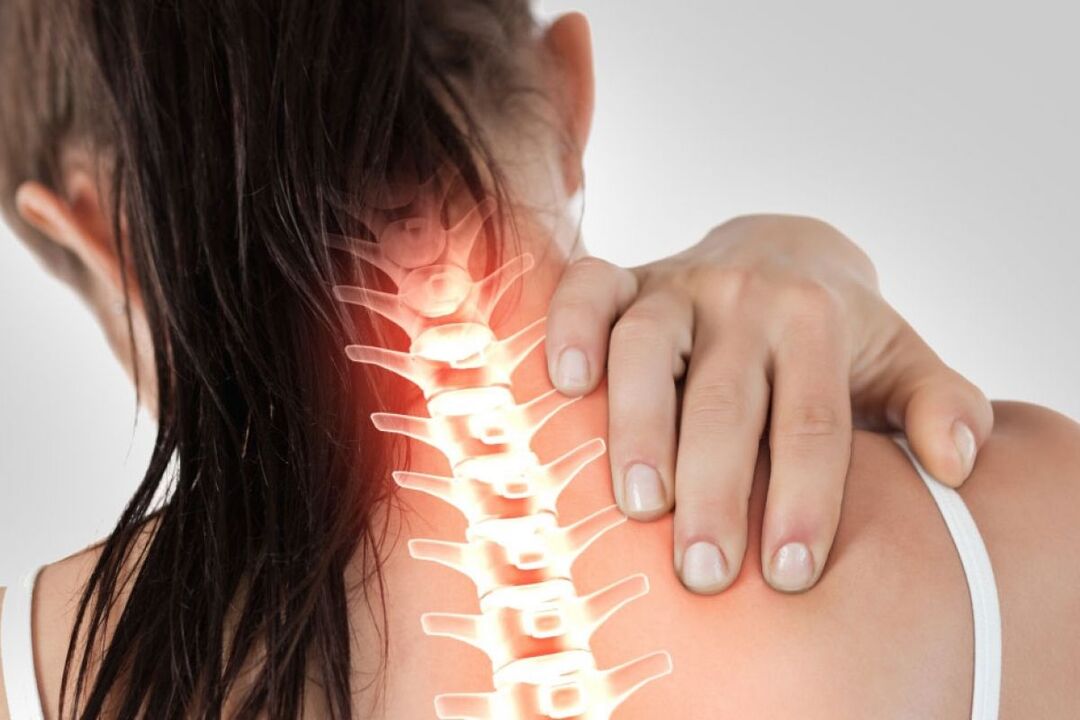Osteochondrosis is a process of degeneration, aging, degradation of cartilage tissue and its transformation into a type of bone. To understand the problem of osteochondrosis, you need to imagine the structure of the spine: it is made up of 35 vertebrae, which are placed one on top of the other in a column, forming the spinal space. Between the vertebrae there is a "pad" - a cartilaginous disc (it serves as a shock absorber and lubricant as the vertebrae move), the disc consists of a rigid layered ring and a melted gelatin core in the center.
To understand the problem of osteochondrosis, you need to imagine the structure of the spine: it is made up of 35 vertebrae, which are placed one on top of the other in a column, forming the spinal space. Between the vertebrae there is a "pad" - a cartilaginous disc (it serves as a shock absorber and lubricant as the vertebrae move), the disc consists of a rigid layered ring and a melted gelatin core in the center.
Symptoms of cervical osteochondrosis:
Everyone knows that the spine becomes thinner in structures close to the head. The upper vertebrae that make up the cervical region are long, delicate, but very strong and mobile. However, their strength is not limited, especially when the daily pressure on the neck exceeds normal. The main cause of osteochondrosis of the cervical spine is always hidden in this burden.
How osteochondrosis of the cervical spine manifests itself also depends on the type of load and the place of damage to the vertebral disc: each nerve root is responsible for a specific function, therefore, the manifestations of cervical osteochondrosis are very diverse. The development of the disease occurs in 4 stages. Each subsequent one is more difficult than the previous one.
Stage 1 cervical osteochondrosis:
How can our spine protect against excessive and destructive physical activity (or inactivity)?
First of all, discomfort: stretching, tingling, shooting - all these are the first signs of spinal disease.
Intervertebral osteochondrosis of the cervical spine begins with a feeling of tension in the neck muscles, their fatigue. The patient may feel a slight pain, frown when turning and tilting the head. Often, the discomfort is thought of as "maybe cold" or "I'm tired of something. "
Remember! Pain is a sign, we can say our body signals, if it works, that’s not all. The pain cannot be ignored or numb with the pill!
Level 2:
The patient already felt more intense pain when turning and turning the head. Sometimes the pain radiates (spreads) to the right or left arm, shoulder joint, sometimes to the hand.
On the part of the nervous system, there are still rare headaches, fatigue, exhaustion, absent conditions (early symptoms of cervical osteochondrosis in women are very similar to the symptoms of the reproductive system cycle: headache, dizziness, feelings of weakness, fatigue).
Although the signs of osteochondrosis of the cervical spine are already obvious, in the second stage there is still a chance to prevent the progression of the disease and the emergence of complications. This is very important to prevent the development of hernias, which in the cervical spine can be dangerous with loss of mobility and disruption of blood supply to the brain.
Level 3:
In the third stage, the disease can already be considered negligible, because the treatment of osteochondrosis of the cervical spine at this stage is already much more difficult, and its destruction is often irreversible. The pain increases when the intervertebral hernia begins to appear.
Persistent weakness and dizziness - due to pinching of the nerves and large ducts that feed the cerebral cortex, are also increasing. Pain is often given to the hands. The preservation of the upper muscles is disturbed, as a result of which they weaken. Numbness and tingling in the hands are common symptoms of stage three degenerative disc disease in the neck.
Level 4:
The intervertebral disc has been significantly destroyed and has undergone major changes, hernias and protrusions each having a significant impact on patient well-being. In place of the crushed disc, connective tissue appears, which loses the flexibility of the spine.
Compression of nerves and blood vessels causes impaired coordination. Pain, drowsiness, lethargy and dizziness are worse. Added to this is the sound of the ears. There is a high risk of diseases caused by osteochondrosis:
- When a vertebral artery is pressed by a hernia, it leads to cerebral ischemia and progresses to spinal stroke;
- Pinching blood vessels can cause a lack of nutrients in the cortex or the lower part of the brain. As a result - impaired perception, loss of consciousness;
- Spinal cord compression can be fatal.

























